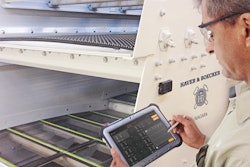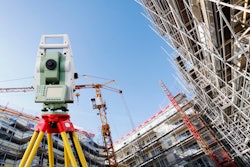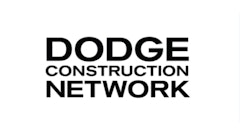
The big challenge for construction professionals looking to streamline operations isn’t whether technologies can help – they can, no question. Rather, it’s where to start.
For one thing, construction-business leaders are sorting through a mass of available point solutions that, while purporting to solve problems in the short term, may or may not help address the foremost underlying issue that has dogged this industry since the Tower of Jericho went up: that is, construction projects involve many hands, and, too often, one hand doesn’t know what the other is doing. It’s long been a generally bitter recipe for inefficiencies, rework, delays and ballooning costs.
For another, we now face the intimidating idea of connected construction, which, as elucidated by the likes of Deloitte, seems to evoke a wholesale, holistic digitalization involving command and control, quality control, asset tracking, performance management, safety intelligence, digital twin and BIM+, workforce efficiency, energy management, and more. It’s a lot to chew on.
Deloitte itself doesn’t assume that construction firms will digitalize in one fell swoop. Among the first steps their experts suggest include asking yourself, as a company, “What use cases or business opportunities are you most interested in solving or enabling?”
Those use cases and business opportunities will differ depending on one’s line of business, market, the competitive landscape and so on. But I’m seeing three key areas in which construction firms tend to be focusing as they take steps toward the connected-construction vision that will – or at least should – materialize across the industry in the near future.
1. Collaboration Tools
Construction projects work best when teams as they’re most broadly defined – owner/operators, architects, engineers, and construction teams – work together. Rare is the project in which these teams are truly siloed. But it’s also far too rare that their collaboration involves data sharing based on real-time information. Rather, so much of what counts as construction-business collaboration happens through emailed spreadsheets and status summaries that can be outdated before the files get opened.
Effective collaboration means using a cloud-based platform that enables real-time access to constantly updated information from all corners of a project based on a particular player’s needs and security permissions. It also means establishing formal collaboration workflows among the players to delineate what the key data points for different roles are (the building owner will be interested in different views of a given pool of information than an electrical subcontractor) and how that data best be shared. Cloud-based project-management systems and collaboration tools are the vehicles to get this done.
2. Mobile Data Capture
Cloud-based data repositories may be far better than dispersed databases/spreadsheets, but the benefits of centrally stored, easily accessible data depend on the quality of that data. When it comes to construction projects, data quality – and, by extension, management’s ability to rely and make decisions based on that data – depends on inputs from teams on the ground. Those inputs will come from mobile devices into which crews provide updates either directly or indirectly based on task-related workflows embedded in those devices. Internet-of-Things (IoT) sensors are also increasingly in play, automatically feeding data to cloud-based project management systems and helping enable predictive maintenance. Either way, mobile data capture can vastly improve the volume and accuracy of the overall project’s data, and, by extension, provide the visibility for players up and down the chain to make better decisions during the course of a mass deployment or one-off build.
3. Predictive Analytics
Predictive analytics solutions use statistical models – and, increasingly, machine learning and artificial intelligence – to predict the future based on data from the past and present. In the construction context, predictive analytics is proving particularly valuable in identifying risks and assisting with forecasting. But there’s a growing universe of construction-business use cases, as McKinsey & Co. points out: from sharpening proposal bids to recognizing when a project may run into trouble. Here, too, centralized, cloud-based data sources and mobile data capture are essential precursors to predictive analytics in construction as they feed the large, up-to-date pools of data upon which predictive analytics depend.
The construction business has an enormous amount to gain from digitalization, so much so that it can be hard to know what to begin. Starting with cloud-based systems that enable real-time collaboration, mobile data capture, and predictive analytics establishes a foundation for enhancement and expansion into the broader vision of connection construction. Along the way, you’ll get a lot more done and save yourself some money – not to mention quite a few headaches.

















